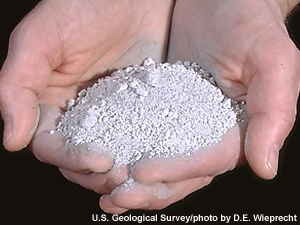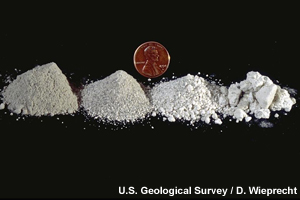Volcanic Hazards » Tephra
 Tephra is a general term for fragments of volcanic rock and lava regardless of size blasted into the air by explosions of hot gases in eruption columns or lava fountains. Tephra includes large dense blocks and bombs, and small light rock debris such as scoria, pumice, and ash. The larger-sized tephra falls close to the volcano, while the wind blows the smaller fragments away from the volcano
Tephra is a general term for fragments of volcanic rock and lava regardless of size blasted into the air by explosions of hot gases in eruption columns or lava fountains. Tephra includes large dense blocks and bombs, and small light rock debris such as scoria, pumice, and ash. The larger-sized tephra falls close to the volcano, while the wind blows the smaller fragments away from the volcano
(see http://volcanoes.usgs.gov/images/pglossary/tephra.php for more information)

Potential effects of volcanic ash fall include:

- Health issues: eye/skin irritation and breathing difficulty
- Daylight turns into darkness and the typical diurnal temperature cycle is reduced (cooler in daytime and warmer at night)
- Roofs may collapse from added weight
- Machinery and vehicles will be abraded
- Deterioration in engine performance and engine failure
- Farmland will be covered
- Roads will be slippery, or blocked
- Power systems may shut down
- Waste-water systems may clog
For more detail on the effects of volcanic ash fall, visit "Societal Impacts" (section 4) of the Impacts module.
